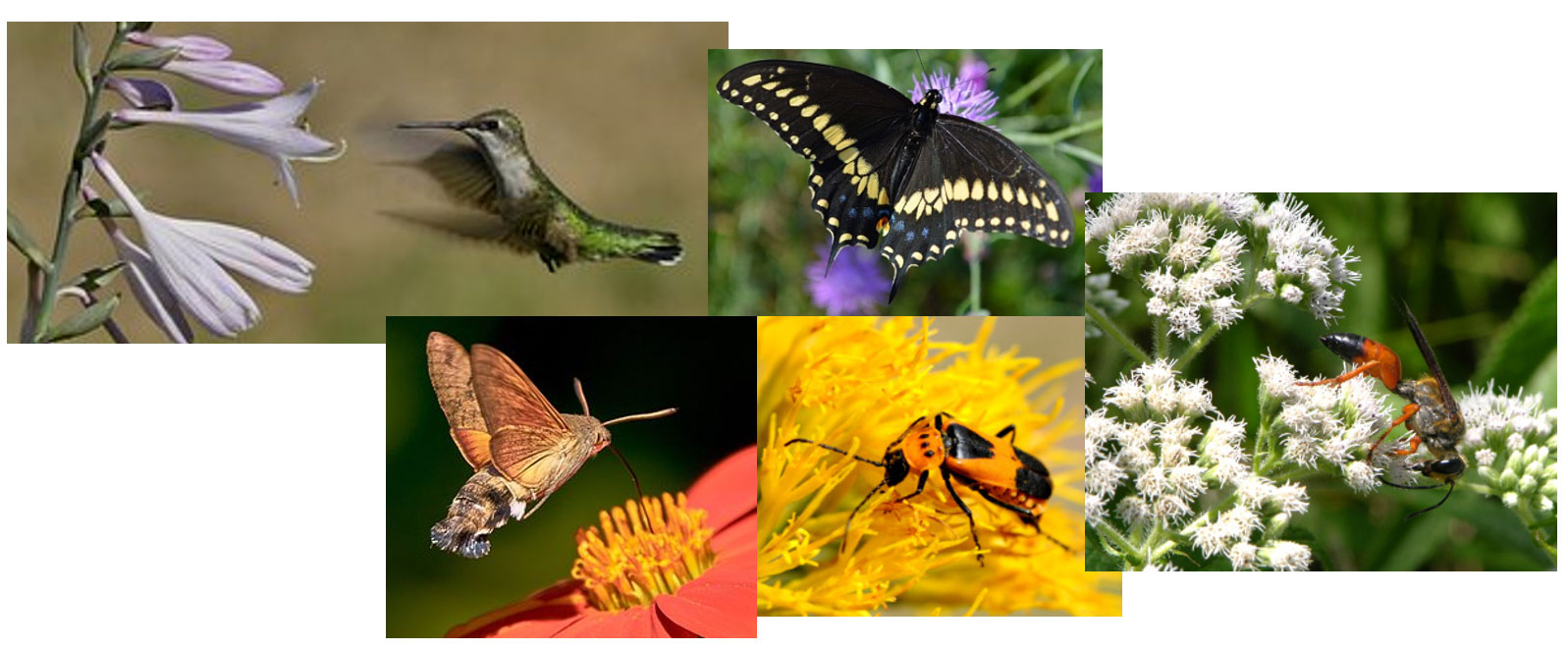
Last month we went in depth about starting a garden. This month let’s talk about our quiet partners – the small but mighty pollinators!
More than bees are on the job. Who are they, you ask?
Hummingbirds, moths, butterflies, wasps and even flies are little pollinator powerhouses.

The most appealing way to attract pollinators is to provide their favorite flowers. The Old Farmer’s Almanac recommends these:
- “For spring, try planting crocuses, Virginia bluebells, lungwort, hellebore, California poppies, columbine, low-growing phlox.
- For early and late summer, plant coneflowers, sunflowers, black-eyed susans, bee balm, gentian, larkspur, or tall phlox.
- For fall, when it gets harder to find nectar, try planting fall bloomers such as salvia, wild geranium, anemone, basil, chives, cilantro, and parsley.”
Vegetable garden flowers are naturally appealing to the bee and fly pollinators. But if you feel pollination is sluggish, try adding some mint plants to your garden as a pollinator “spotlight”. Bees and flies of many species are deliriously drawn to the tiny flowers that appear in mid to late summer, and will work the space for hours and days on end. Neighbor flowers cannot help but benefit from so much attention, too.
Update on winter sowing:
Since last reported, I have winter sown more selections in plastic jugs: cauliflower, broccoli, brussels sprouts, petunias, thyme, marigolds, some squashes and sunflowers. With the exception of the slow-germinating seeds, everything has sprouted! The squash containers are ready to be opened up to the sun. We have had a few freezing nights, so I have been covering the jugs up with cardboard boxes to protect the tender shoots; so far so good.
This whole experience has been eye opening for me. My efforts at indoor seed starting has never been very successful, and this is a game changer! I hope you will try it next year.
Spring Garlic Directions:
As promised, spring and summer how-to’s for your garlic crop as per The Old Farmer’s Almanac are below:
- “In the spring, as warmer temperatures arrive, shoots will emerge through the ground.
- Cut off any flower shoots that emerge in spring. These may decrease bulb size.
- Garlic is a heavy feeder. In early spring, side-dress with or broadcast blood meal, pelleted chicken manure, or a synthetic source of nitrogen such as a pelleted fertilizer.
- Fertilize again just before the bulbs begin to swell in response to lengthening daylight. Repeat if the foliage begins to yellow.
- Keep the planting site well-weeded. Garlic doesn’t do well with competition—it needs all available nutrients!
- Water every 3 to 5 days during bulbing (mid-May through June). If May and June are very dry, irrigate to a depth of 2 feet every eight to 10 days. As mid-June approaches, taper off watering.”
For the bulbils that were available at the library, follow the above directions, continuing to water and fertilize, but remember, harvesting will occur next year.
Other things to do in the garden:
~Thin out invasive plants before they get too settled. Species like Texas Dewdrop and Wormwood benefit from a little cutting back, and their neighboring plants will appreciate it.
~Make a diagram of what seeds/plants go where in the garden.
~ Harden off tender plants raised indoors, by taking them outside during the day, then bring them back in at night to protect from late frosts.
“Gardening is a gift that gives its lessons slowly, over seasons and when we pay attention, what we take from it will shape us too over time.”
– Melissa Spencer
Caroline Poppendeck, Librarian
Steele Memorial Library
